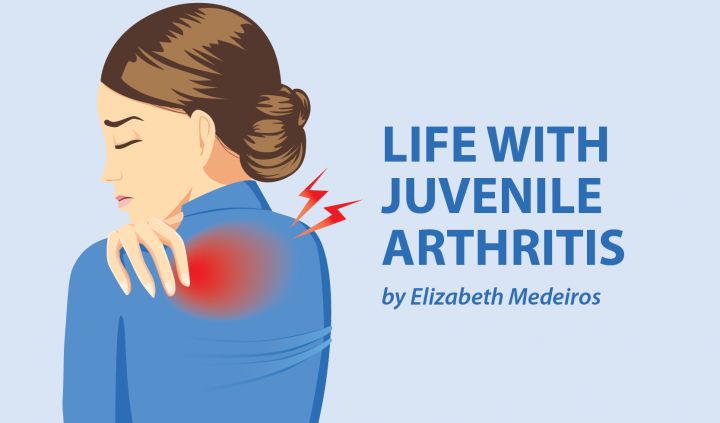I could feel my face become flush and warm. It was right after lunch, and I knew I was due for a low-grade fever. While it’s not something I dealt with every day growing up, it was a sign that I was overdoing it or was in a flare. I had hoped I would grow out of this pesky symptom of juvenile arthritis one day, but here I was with a JA fever at my first full-time job after college.
Unfortunately, fever is a common symptom of autoimmune arthritis that’s often brushed over. Adults face low-grade fevers, especially if they have rheumatoid arthritis or lupus. Typically, kids will have lower grade fevers if they have polyarticular-type juvenile arthritis or juvenile-onset lupus. Children with reactive-type arthritis and systemic-onset juvenile arthritis are more likely to suffer from high body temperatures.
Track the fever
It’s important that your child’s rheumatologist knows about any occurrence of fever. While low-grade fevers are not considered dangerous, it’s useful to track them. Many people find patterns, such as high temperatures occurring during flares or at night after a busy day. My first major flare began with fevers, and I still regularly get them at work or school.
With kids, it’s hard to know if a mild fever is from their JA or from a cold they picked up at school. If your child is suddenly running a temperature, even if it’s low, it’s important to alert your child’s rheumatologist. It’s especially important if your child is taking any medication that can suppress their immune systems, such as Methotrexate or a biologic. Since fever can be a sign of infection, it’s important to treat it quickly. You may feel like you’re constantly calling your child’s doctor — I know my mum did — but it’s better to be on the safe side.
Treating it
Your child’s pediatric rheumatologist will be able to help you come up with a fever plan for your child. Some kids benefit from taking a fever reducer as needed, while others may find their fevers vanish with proper treatment. Each child’s needs are different, and it’s important to follow doctors’ instructions.
That said, cold compresses are always comforting during a slight fever. During school or activities, remind your child to take a break if they feel flushed. A short trip to the bathroom to wash their face and hands with cool water can help considerably. It’s a good idea to let the school nurse in on your child’s condition. She can help track your child’s temperature and offer her a short rest break during class.
Pushing through it
A fever is a particularly difficult symptom of juvenile arthritis to push through. Over the years, I’ve learned that fevers mean my body needs to rest. But it’s hard to justify breaks at school or work, especially when fevers are a daily thing. When other children were running low-grade fevers, they were “sick” and got to take it easy. But for me, this was normal, and I was expected to push through it.
Parents, know your child who deals with fevers needs extra support. Take the time to explain your child’s condition to his teachers, coaches, and other caregivers. Explain that, in addition to pain, your child deals with fevers and may need extra rest or trips to the nurse’s office. Doing this ensures that when your child advocates for their needs, they will be met with understanding. Kids with JA go through a lot, but openly communicating their struggles with their community can make things so much easier for them.
***
Note: Juvenile Arthritis News is strictly a news and information website about the disease. It does not provide medical advice, diagnosis, or treatment. This content is not intended to be a substitute for professional medical advice, diagnosis, or treatment. Always seek the advice of your physician or other qualified health provider with any questions you may have regarding a medical condition. Never disregard professional medical advice or delay in seeking it because of something you have read on this website. The opinions expressed in this column are not those of Juvenile Arthritis News, or its parent company, BioNews Services, and are intended to spark discussion about issues pertaining to juvenile arthritis.


